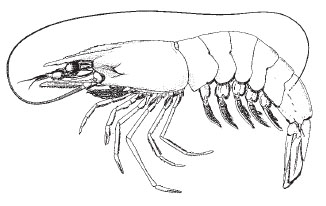Habitat, biology, and fisheries
Normally inhabits estuaries and inner oceanic littoral, being more abundant at depths less than 30 m; it may, however, occur in deeper waters (to 82 m). The largest concentrations are found in extensive brackish water areas of softmud or clay bottoms (sometimes with sand) connected with the sea.The postlarvae and juveniles grow up in estuarine waters, especially on vegetated mud bottoms rich in organic debris. An omnivorous species, although it prefers certain types of food such as polychaete worms. Centres of abundance are off Georgia and northeast Florida, Louisiana, Tabasco, and Campeche. This species is of great economic importance in the USA and Mexico. Fishing operations at sea extend to depths of about 27 m.A sizeable fishery of juveniles occurs in estuarinewaters, although its yield is considerably smaller than that of the marine fishery for adults. In the fisheries statistics for the years 1984 to 1998 Litopenaeus setiferus was referred as Penaeus setiferus. From 1984 to 1998 the capture production reported from the USA totaled 572 349 t (mean capture production was 38 156 t/year). This species accounts for part of the Mexican shrimp catches, which totaled 540 864 t in the Area 31. In Mexico the penaeid catches are not broken down to species; instead, species are combined and referred as Penaeus spp. Adults are mainly caught with American-type shrimp trawls (balloon and flat); usually 2 trawls are towed simultaneously (double-rig). Juveniles and subadults are taken in inshore and near shore waters with different types of gear: seines, push nets, dip nets, cast nets, lift nets, drop nets, frame trawls, and side frame trawls. This species is marketed mostly frozen and canned, and exported all over the world. Juveniles and subadults are often sold as live bait. This species has been farm-raised on a small scale.
|
